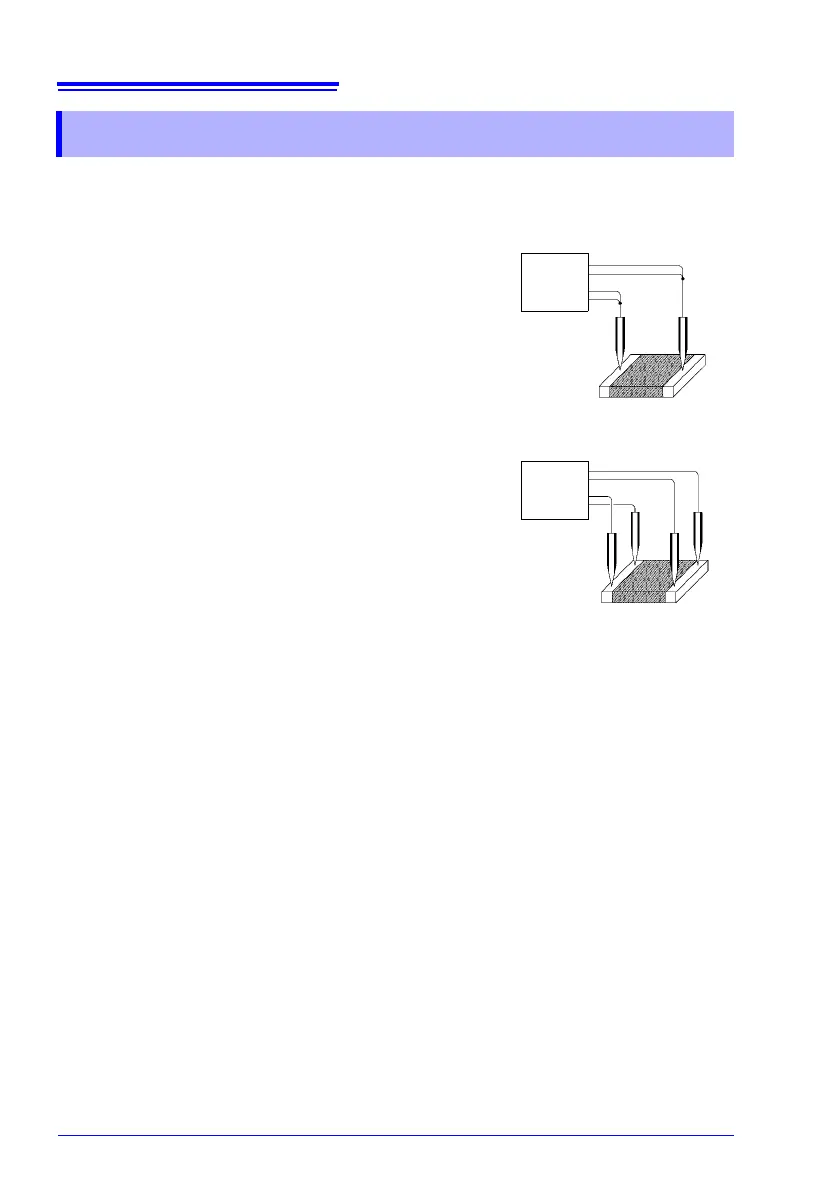Appendix 7 Unstable Measured Values
A12
If the measured value is unstable, verify the following.
(1) Non-Four-Terminal Measurements
The four-terminal method requires that four probes be con-
nected to the measurement target.
By measuring as shown in Fig.1, the measured resistance
includes that of the contacts between the probes and mea-
surement target. Typical contact resistance is several mil-
liohm with gold plating, and several tens of milliohm with
nickel plating. With measured values of several k this
would not seem to be a problem, but if a probe tip is oxidized
or dirty, contact resistance on the order of a k is not
unusual.
To maximize the opportunity for accurate measurement,
separate the four probes so that they make contact with the
measurement target as shown in Fig. 2.
(2) Effects of external noise
Noise affecting the measurement target, measurement cable, power cord, communications
lines, and other wires can cause measured values to become unstable. Noise can take the
form of:
• Inductive noise from high-voltage or high-current circuits
• Conductive noise from power lines or other sources
Solutions vary with the source of the noise.
For more information, see "Appendix 8 Mitigating Noise" (p.A19)
Appendix 7 Unstable Measured Values
Figure 1. Two-Terminal
Measurement
Figure 2. Four-Terminal
Measurement
SOURCE A
SENSE A
SENSE B
SOURCE B
SOURCE A
SENSE A
SENSE B
SOURCE B

